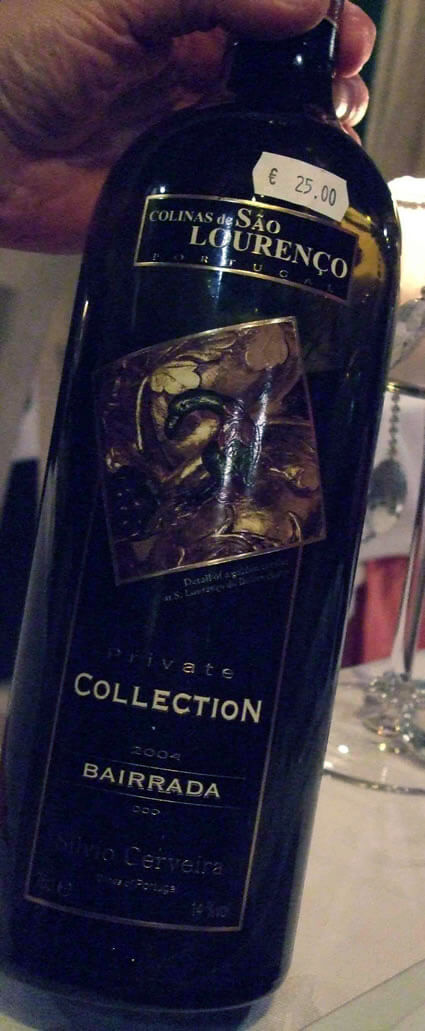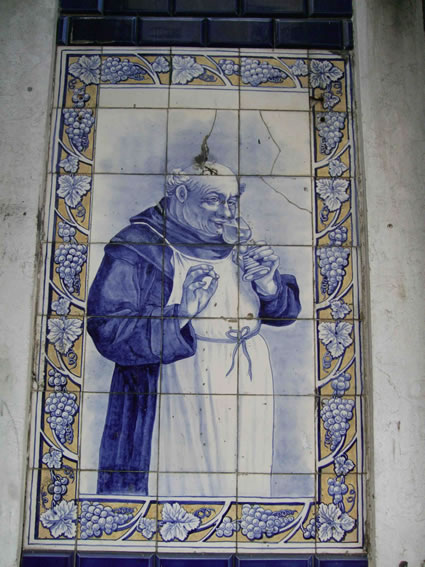Portuguese Wines Beyond Port
by Beebe Bahrami

|
|
Terraced vineyards in the Doura Valley of Portugal.
|
When discussing Portuguese wines, everyone immediately thinks of port, the great city of O Porto, and where much is produced in the Doura Valley. But Portugal also produces many great wines everywhere, in a tradition that includes the Phoenicians, Greeks, Romans, and the monastic wines of the Middle Ages.
Portugal is an ideal country for wine production. Its long north-south body encompasses several distinct growing areas with unique microclimates and soils. Even the islands partake in the production.
There are some 26 DOC (Denominações de Origem Controlada, controlled denominations of origin) wine regions in Portugal and another 4 IPRs.(Indicacão de Proveniência Regulamentada, indication of regulated provenance) wine regions. IPR wines are on their way toward becoming DOC wines if they meet certain stringent standards and qualities. There are also 11 (VRs) Vinho Regionals. This translates into a lot of striving for quality and signals an exciting and vital wine industry.
Here is a broad overview of this intricate wine mosaic, working north to south and then finishing at the Azores islands:
The Minho River area
The Minho river area, at the northern border with Spain's ancestrally related province of Galicia, is best known for sparkling young wine, Vinho Verde, a delightfully refreshing and dry white.This wine area also includes coastal Douro wines, named after another famous river in northern Portugal.
Trás-os-Montes
This is the region best known for its production of port. For a great low down on port, see Lucia Byttebier’s article, Port Wines of the Douro Valley in Portugal. This area also includes the interior Douro wines.

|
|
An bottle of Bairrada wine as yet unopened. Photo by Beebe Bahrami.
|
Beiras
The Beiras region produces some of the most captivating wines, ones I equate with those from Bordeaux: they are fruity-to-earthy, medium-bodied, and often delicate but bold at once. The region traverses from Coimbra north to just below Oporto and then inland to the eastern border with Spain. Beiras' best-known wines are Dão and Bairrada. Bairrada is distinguishing itself more and more as producing complex, distinct wines. Because it can be a feisty wine, you often must pay more for a good bottle. But you are drinking the wine at its best in the hills and valleys of central Portugal.
Estremadura
Estremadura wines are good, solid, full-bodied wines West and north of Lisbon. The region has a long Atlantic coastline and many vineyards.

|
|
Monastic winemaking is honored in Lisbon's street tiles.
Photo by Beebe Bahrami.
|
Ribatejo
Ribatejo is one of the country's important wine areas north and east of Lisbon. In the 14th century, this area passed legislation to protect against the introduction of foreign vines and has, as such, developed unique Portuguese varietals for centuries. The growing area benefits from a mix of river and plain and has a riotous blend of soils, from fertile, marshy soil to limestone and clay.
Alentejo
The Alentejo produces the boldest and most minimal wines. These are complex, robust, smooth, and rich. The closest wines from another region to Alentejano are those from Spain's Ribera del Duero and Rioja regions. The Alentejo extends east of Lisbon and south toward the Algarve.
Terras do Sado
Terras do Sado is situated just west of the Alentejo and has a rich, diverse coastline extending south of Lisbon. One of my favorite red wines to enjoy with meals, Palmela, is from here. A lot better known is the Moscatel de Setúbal, a dulcet golden-colored aperitif, and its red cousin, Moscatel Roxo, which will appeal to those who generally don't like sweet wines but would like to try a dry, complex result of the Muscat grape.
Algarve
Portugal's southernmost continental wine-growing area, the Algarve, makes wines for quantity rather than quality. The relative lack of refinement may reflect the significant beach-worshiping tourist industry in this part of Portugal. Its early ancestry, most likely from classical periods, continued during the Muslim occupation of the Algarve as wine production carried on in Iberia to keep everyone content. The Christian conquest of the area continued the same layout and methods for wine-growing and output. Algarve wines go down easily as refreshing accompaniments to the abundant grilled sea fare along the southern coast.
Madeira
The island of Madeira gives its name to its unique wine, one heated to achieve smooth sweetness. The heating came about by accident, replicating the original creation of Madeira as a wine that naturally heated and cooled itself on its ship journeys through equatorial waters on its way from Madeira to east and southeast Asia. Because the result was good, now ovens and estufas were used after fermentation to replicate the Equator's original effects.
The Azores
Because of their volcanic soil, the Azores islands possess ideal growing conditions for winemaking. Unlike Madeira, these are not sweet wines but excellent table wines. Because the Azores possess similar growing conditions to those found in Sicily, many Sicilian varietals are grown here successfully.
To fully explore Portuguese wines on the ground while enjoying touring the nation's astonishing countryside, visit Vini Portugal. This the site for Portugal's wine trade association. Here, you will find good resources and excellent details for touring wine routes.
Beebe Bahrami is a freelance writer and cultural anthropologist specializing
in travel, food and wine, and cross-cultural writing.
|
